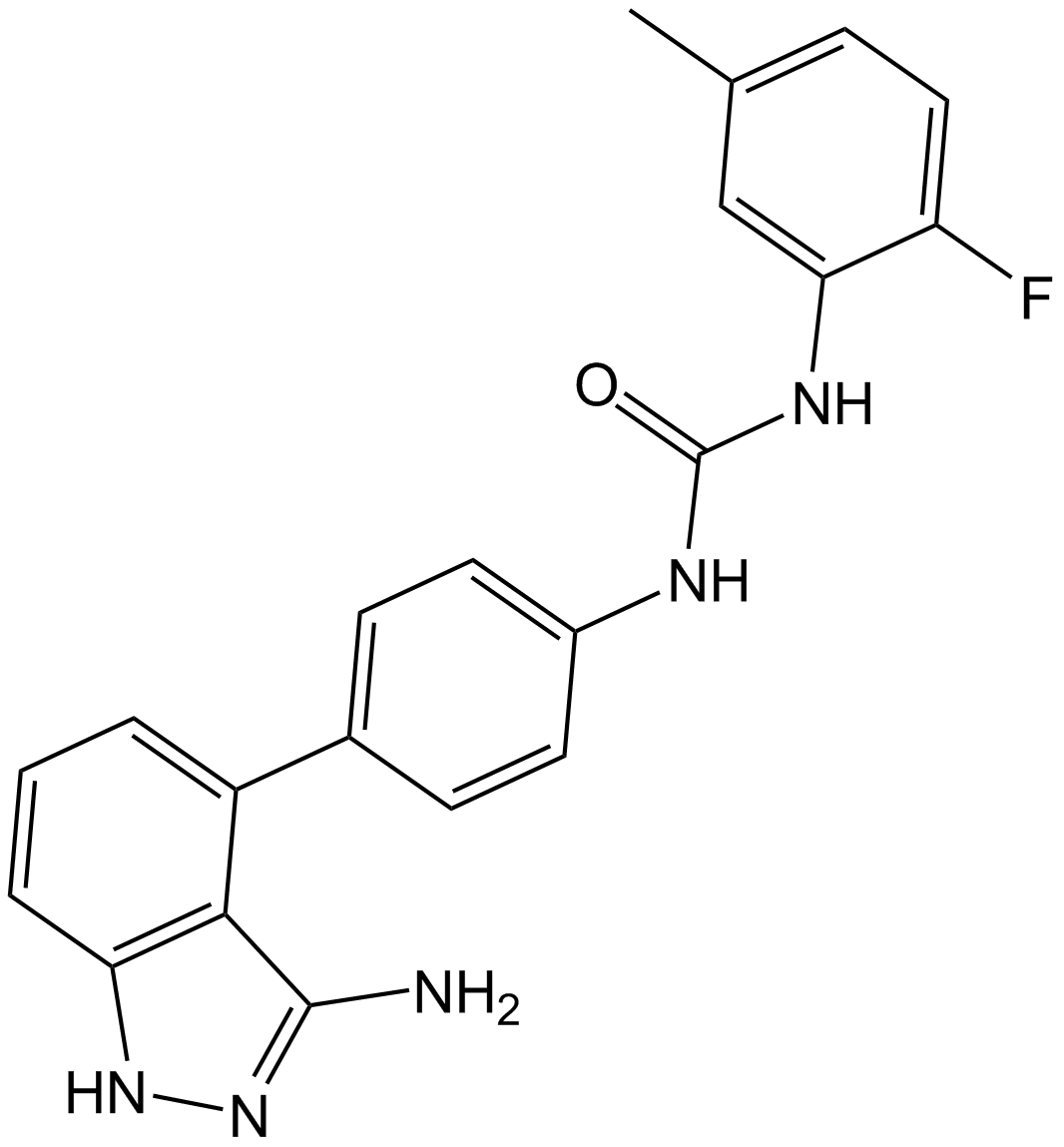Linifanib (ABT-869) (Synonyms: Linifanib) |
| Catalog No.GC17958 |
Linifanib (ABT-869) (ABT-869) is a potent and orally active multi-target inhibitor of VEGFR and PDGFR family with IC50s of 4, 3, 66, and 4 nM for KDR, FLT1, PDGFRβ, and FLT3, respectively. Linifanib (ABT-869) shows prominent antitumor activity. Linifanib (ABT-869) has much less activity against unrelated RTKs, soluble tyrosine kinases, or serine/threonine kinases. Linifanib (ABT-869) is a specific miR-10b inhibitor that blocks miR-10b biogenesis.
Products are for research use only. Not for human use. We do not sell to patients.

Cas No.: 796967-16-3
Sample solution is provided at 25 µL, 10mM.
Linifanib (ABT-869) is an effective ATP-competitive tyrosine kinase inhibitor against the platelet-derived growth factor (PDGF) receptor and the vascular endothelial growth factor receptor (VEGFR) families, including constitutively active FMS-like receptor tyrosine kinase 3 (FLT3) [1][2]. It is of IC50 values of 0.55 nmol/L and 6 μmol/L to the cell growth in Ba/F3 FLT3 ITD mutant cells and in Ba/F3 FLT3 WT cells, respectively [1].
FLT3 is important in controlling the proliferation and differentiation of hematopoietic cells. Patients with acute myeloid leukemia (AML) showed activating mutations in FLT3. These mutations caused abnormal cell proliferation [1].
Linifanib at a concentration of 10 nmol/L induced apoptosis in internal tandem duplication (ITD) mutant cells, but showed no effect in WT cells. Treatment with linifanib did not differentiate WT cells from FLT3 mutant cells with mutation at D835V, in inhibiting proliferation or reducing cell viability. In Ba/F3 FLT3 ITD cell lines, linifanib at a concentration of 10 nmol/L, effectively inhibited the phosphorylation of FLT3. 10 nmol/L linifanib reduced the phosphorylation of Akt at Ser473 [1].
Daily orally treatment with linifanib by gavage in NOD/SCID mice with ITD mutant cell decreased the leukemia progression rate compared with the control. On day 7, ITD mutant cells showed rapid progression in control mice, whereas linifanib-treated mice showed no detectable disease. In addition, daily linifanib-treated mice with ITD mutant cells showed significantly longer (P < 0.01) survival duration than control mice with ITD mutant cells only [1].
References:
[1]. Jenny E. Hernandez-Davies, Joan P. Zape, Elliot M. Landaw, et al. The Multitargeted Receptor Tyrosine Kinase Inhibitor Linifanib (ABT-869) Induces Apoptosis through an Akt and Glycogen Synthase Kinase 3β–Dependent Pathway. Mol. Cancer Ther., 2011, 10(6):949-59.
[2]. Joyce E. Ohm, Michael R. Shurin, Clemens Esche, et al. Effect of Vascular Endothelial Growth Factor and FLT3 Ligand on Dendritic Cell Generation In Vivo. Journal of Immunology, 1999, 163:3260-3268.
Average Rating: 5 (Based on Reviews and 5 reference(s) in Google Scholar.)
GLPBIO products are for RESEARCH USE ONLY. Please make sure your review or question is research based.
Required fields are marked with *




















